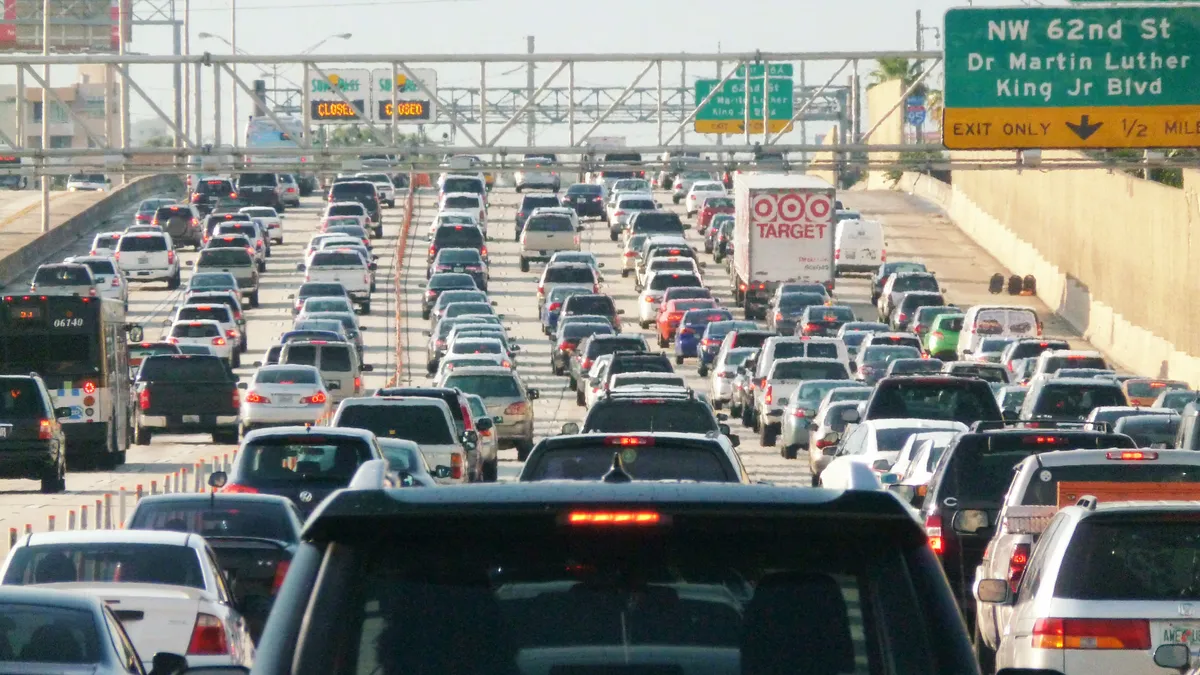Dive Brief:
- Approximately 18,720 people died on U.S. roads between January and June of 2018, a slight reduction from the same period in 2017, according to preliminary estimates from the National Safety Council (NSC). That puts the U.S. on pace for the third straight year with 40,000 or more roadway deaths, the group warns.
- An estimated 2.1 million people sustained crash-related injuries in the first half of this year, down just 1% from 2017.
- The 0.5% drop in fatalities comes after a sharp two-year increase in fatalities. NSC Manager of Statistics Ken Kolosh said in a statement that "we aren’t making progress — we’re treading water."
Dive Insight:
The multi-year climb in traffic fatalities has been a troubling trend, and has come with only a slight increase in vehicle miles traveled. The group Advocates for Highway & Auto Safety has called the trend a "public health epidemic" as part of a call for stricter traffic laws. In response, some cities have adopted "Vision Zero" policies to reduce traffic deaths for all users, but clearly more direct work is needed. The fatality numbers have also prompted a shift in how to think about traffic safety; a January report from the World Resources Institute said cities should pick up the burden, treating traffic deaths as a public problem to be fixed through policy rather than an individual’s responsibility.
The climb in traffic fatalities has also meant an uptick in pedestrian deaths; a March report from the Governors Highway Safety Administration (GHSA) projected almost 6,000 pedestrians were killed in car crashes last year (NSC’s initial estimates did not separate out pedestrian deaths). In response, cities have taken steps to protect pedestrians and bikers. Los Angeles and Portland, OR, for example, have lowered speed limits on some streets, while New York City has installed 1,500 pedestrian barriers. Cities like Detroit are even redesigning major thoroughfares to reduce speeds and lane switching to keep the streets safer.
The growth in autonomous vehicles (AVs) is expected to reduce the traffic fatality numbers by eliminating human error, the cause of 94% of crashes according to National Highway Traffic and Safety Administration (NHTSA) data. But those benefits will not be felt for years, or even decades, and a recent GHSA report cautioned that the transition could be tricky with human drivers sharing the road with new autonomous cars. In the interim, more work will be needed to ensure that traffic deaths start dropping again.











